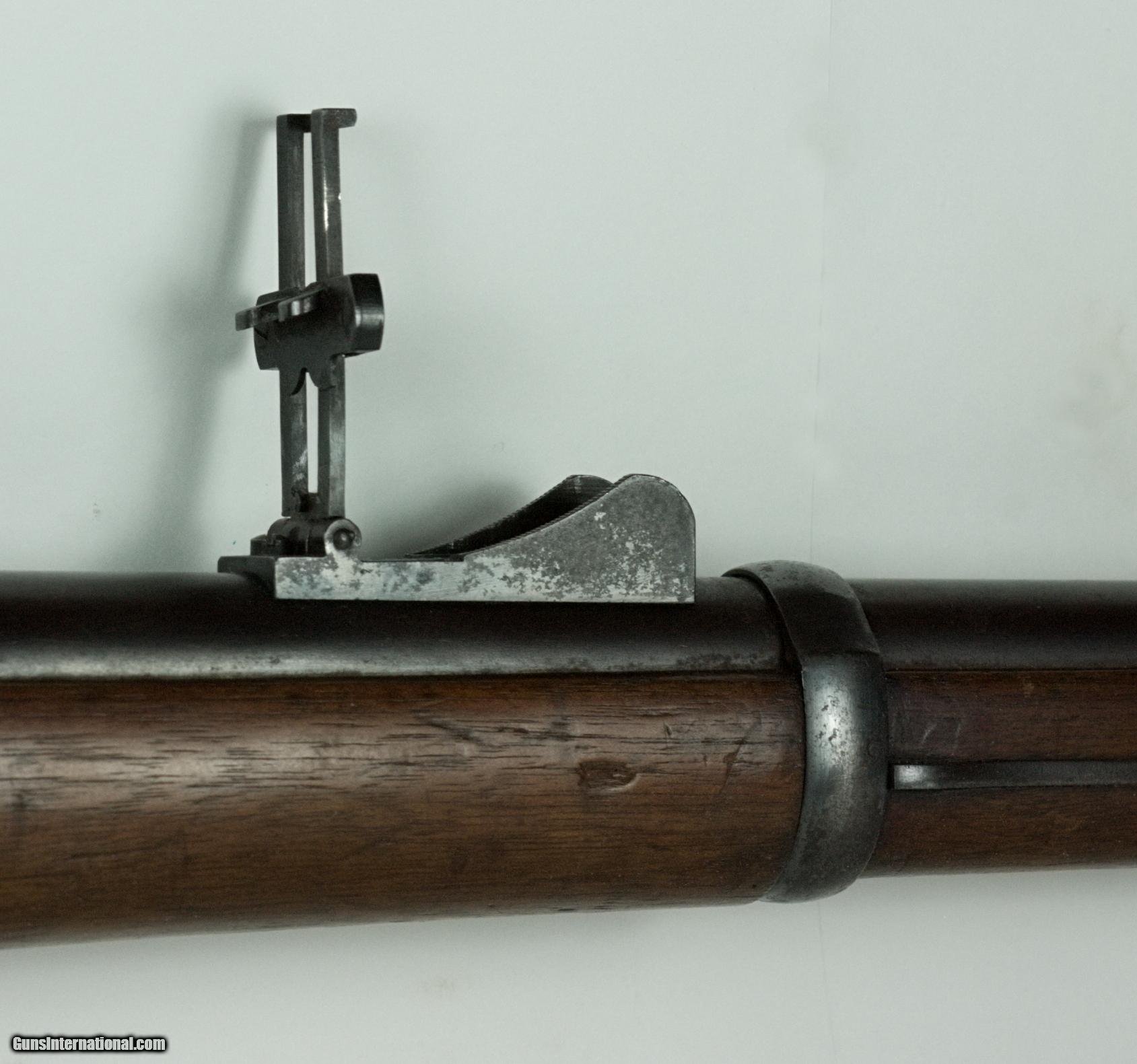


As a result, the United States Army adopted the Krag-Jorgensen repeating rifle in 1892. By then, the Army's Board of Ordnance found themselves outgunned when using single-shot rifles. The reliability and accuracy of the Springfield Model 1884 Trapdoor Rifle worked well for the United States Army from 1886 to 1892. The improvements made to the Model 1884 Trapdoor Rifle were a serrated trigger and an enhanced rear sight designed by LTC Adelbert R. The Model 1884 replaced the Model 1873, while the Model 1873 carbine was issued to the cavalry until 1896. The Springfield Model 1884 was officially adopted by the United States Army as the official standard-issue rifle in 1886. The United States Army Board of Ordnance kept running tests on the Model 1873 to find its weaknesses so improvements could be made to the Springfield Model 1884 Trapdoor. However, the rifle was released slowly to the soldiers throughout its tenure. The United Army adopted the Springfield Model 1873 Trapdoor Rifle as a standard-issue combat rifle. But, for Model 1873, Allin went back to the drawing board, creating a one-off trapdoor design from machined parts. The Model 1865 retrofitted muskets with the breech-loading trapdoor mechanism, making it capable of firing a paper or linen patched cartridge primed by a percussion cap. The Springfield Model 1865 Trapdoor Rifle was the first of Allin's trapdoor rifle patents. He first introduced this revolutionary design in the Springfield Model 1873 Trapdoor Rifle. Consequently, he created a breech-loading design known as the trapdoor. Allin began working on a new design for such a powerful cartridge, the shooter's safety was on his mind. 45-70 cartridge was the ammunition used to slaughter the majority of the American Bison during the American Indian Wars.A 405-grain projectile encased in a metallic housing filled with seventy grains of black powder creates an ammunition cartridge capable of firing at 1,200-feet per second. 45-70 Government cartridge could be very accurate with an enormous amount of power. The Model 1873 did not disappoint during testing. 45-70 Government, self-primed, metallic cartridge. It was known as the Model 99, but its new designation was the Springfield Model 1873 Trapdoor Rifle, once officially adopted by the United States Army.īecause the Model 1873 was built from the ground up, Allin gave the rifle a rifled barrel and chambered it for the. Erkin Allin chose to go back to the drawing board and design a new gun from scratch. The United Army adopted the Springfield Model 1873 Trapdoor Rifle as a standard-issue combat rifle. In 1870, the United States Army Board of Ordnance decided to hold more tests for a new standard-issue rifle. Reserve units and State Militias continued to use them for decades afterwards. The Springfield Model 1873, 1884, & 1888 rifles were used by the Army between 1873 and the adoption of the Krag-Jorgensen rifle circa 1894. Still, the Army's Board of Ordnance felt that adopting a repeating rifle would cause front-line troops to use more ammunition than was necessary. Heres another good site to check out: Ditto with all of the above comments. At the time, repeating rifles were gaining popularity. The rifle was in service from 1865 to 1870 but was slowly integrated into use in the field. As a result, it was a cost-effective conversion. The United States Army Board of Ordnance adopted the Springfield Model 1865 quickly because the gun's production used existing parts. Thus, it was the birth of the Springfield Model 1865 Trapdoor Rifle, and it was adopted immediately by the United States Army. 50-caliber conical shot loaded in a metallic casing. In addition, he scaled down the caliber from a. To achieve the goals set forth by the United States Army Board of Ordnance, Allin modified modern muskets with a trapdoor on top of the gun's receiver. Allin was the master armorer of the Springfield Armory located in Springfield, Massachusetts. The design that won the contract was the Springfield Model 1865 Trapdoor Rifle, designed by Erskine S. Gunmakers from all over the world had offered firearms for testing, but only one passed all of the Army tests. The Board of Ordnance made it known that trials would soon begin for a new standard-issue infantry rifle. In 1865, the United States Army had decided that the musket was no longer suitable for battle or the United States Army Board of Ordnance.


 0 kommentar(er)
0 kommentar(er)
